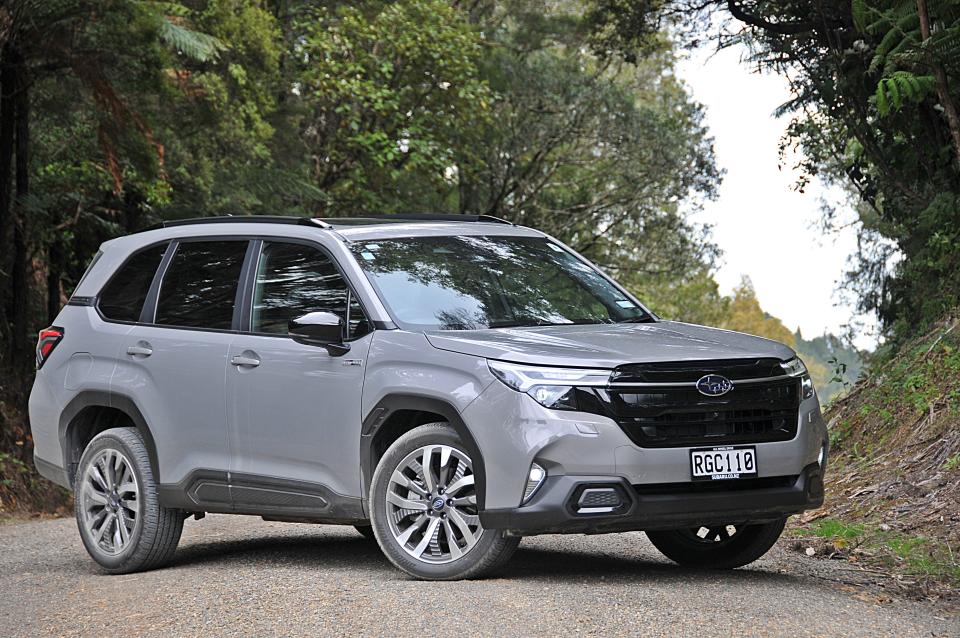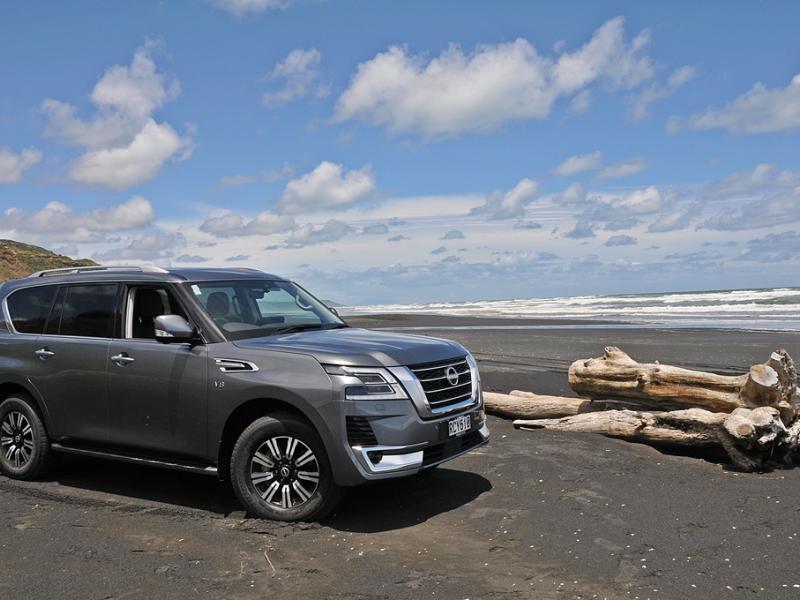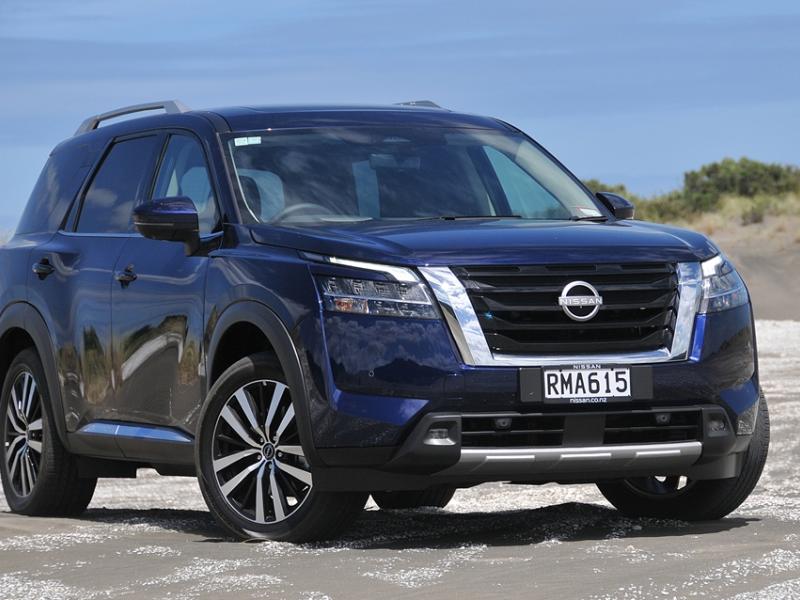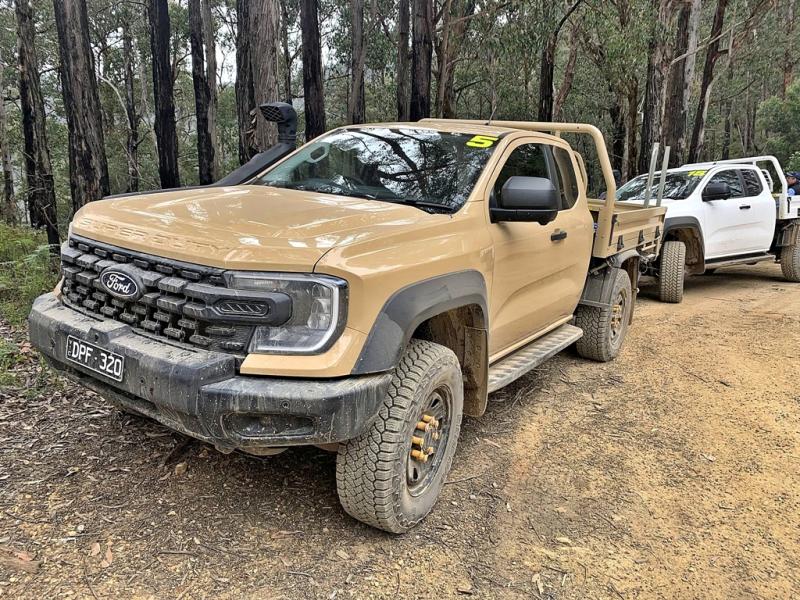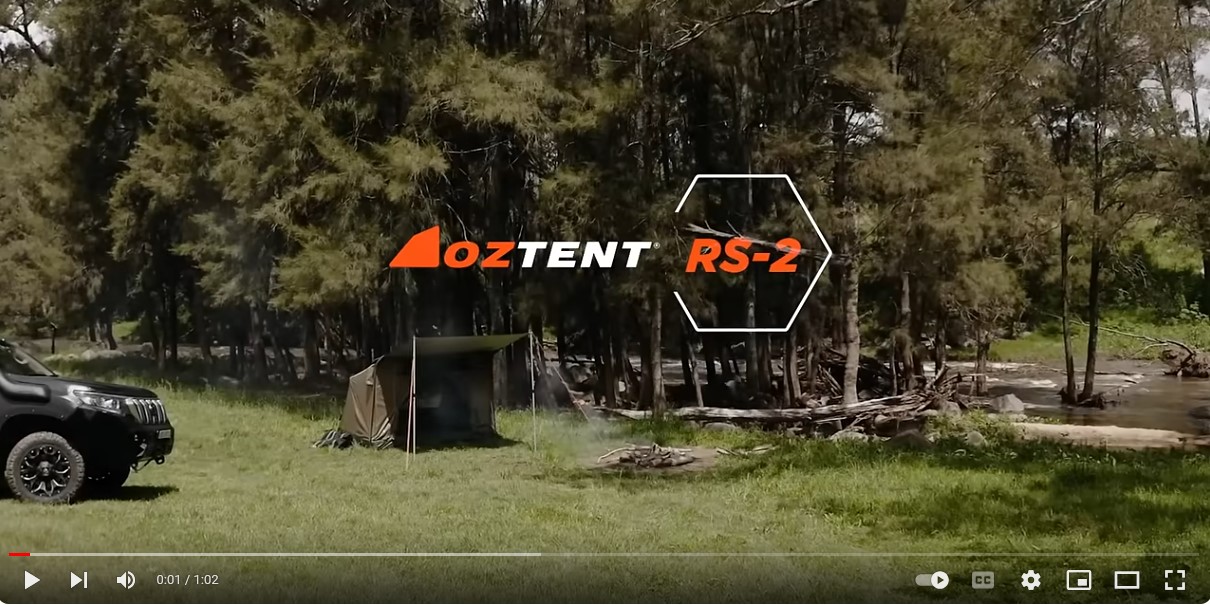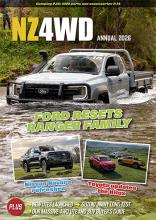It’s been a favourite with outdoorsy Kiwi drivers for decades, and with good reason. It might not have low range, but Subaru’s Forester is built on a genuine mechanical all-wheel-drive (AWD) system that doesn't rely on electronic trickery for traction, working works more conventionally to provide all-weather and all-surface grip.
Among the crowded SUV end of the 4WD market, electronic traction aids may have reduced the advantage Subaru used to have with its AWD system, but with the new Forester, Subaru has produced something quite special, something worth a second look.
When software might go AWOL just when it’s needed most, there's something to be said for the surety of Subaru's 50:50 drive split and the way it works.
The other factor that puts the Forester at the forefront of buyers' minds is its car-like driving dynamics and feel behind the wheel. It has always felt more like driving a car than an SUV or 4WD, and for buyers who primarily spend their time in the city, that's a factor worth taking into consideration. The new Forester compounds and enhances this road ‘feel’.
The older hybrid Forester didn't deliver the fuel-use savings expected, which meant it couldn't compete with the runaway segment leader – the Toyota RAV4 Hybrid.
Now, for this sixth generation, Subaru has armed the Forester with a hybrid system it reckons can deliver the fuel savings buyers want, while retaining the signature Subaru drive experience, durability, and practicality.
The ‘Strong Hybrid’ system has a mechanical connection between the front and rear wheels. Most other hybrid SUVs hang an electric motor out the back to drive the rear wheels.
Subaru’s integrated system means more consistent torque distribution across all four wheels, enhancing stability.
A quick blast down to the snow has never been more appealing. Nor has a weekend jaunt to the Coromandel to go kayaking or fishing or camping. Or, in our case, a run up to the mtb tracks at Hunua. These are the ways the Forester fits seamlessly into the outdoor lifestyle we all aspire to enjoy.
The hybrid system is still called 'e-Boxer'. The new hybrid mechanicals pair Subaru's tried and tested 2.5-litre four-cylinder petrol boxer engine with an 88kW electric motor and 1.1kWh battery pack.
The hybrid powertrain allows the vehicle to run up to 30km/h without the petrol engine going to work and above that will do what it can to reduce fuel consumption as much as it can.
The Forester hybrid makes a combined 145kW, compared to 136kW for the petrol-only version. Combined fuel consumption is 1.7l/100km better for the electrified version, at 6.2l/100km. We had a traffic-plagued time in our urban/motorway drives, so were stuck at 7.1l/100km.
The hybrid part of the drivetrain is sourced from partner Toyota, but the Forester will eschew a layout that would see an electric motor power the rear wheels for example. That would of course rob the car of grip if the battery is drained, something Subaru would never consider.
Inside, it’s all stock Subaru. There is an 11.6-inch portrait-orientated touchscreen with a range of proper physical switches on its flanks and on the steering wheel.
Subaru’s commitment to proper switches for key functions is based on customer feedback.
The centre screen gets wireless smartphone connectivity and in the centre console there's wireless charging too. There’s a 360-degree camera, upgraded 'Eyesight' safety technology, nine airbags and heated front seats.
The ADAS driver safety features are all there, of course. Nobody gets a five-star safety rating without them. But they are subtle and finely tuned compared to some versions.
A full complement of Subaru’s active safety and driver assist systems is standard across the entire range – autonomous emergency braking, lane-keeping assist, lane-centring assist, lane-change assist, traffic sign recognition, adaptive cruise control, blind-spot monitoring, reverse automatic braking, and a driver monitoring system with emergency driving stop (if the system detects the driver is unresponsive) will gradually and safely bring the car to a complete stop.
The systems are helpful rather than overbearing, with nice calibration on lane-keeping assists and driver attention monitoring, while adaptive cruise control was excellent at maintaining the set speed.
The cabin has an airy feel thanks to an enormous panorama glass roof, half of which is a sliding sunroof. Subaru’s new seats contribute to this, with slimmer headrests.
Cargo capacity is 484L in the hybrids.
The navigation software is good, the display crisp and clear.
Storage options are plentiful with a decent central storage bin, a pair of cupholders in the centre console, bottle holders in the door cards and a single glovebox.
We stopped at Hunua on the way to the mtb tracks, and bought artisan bier sticks, smoked chicken breasts and manuka-smoked bacon, all of which fit neatly into the centre console storage bin.
The front seats are comfortable and supportive, with ventilated main panels for the seat heating system – these do a decent job of keeping the occupants cool on warm days when seat heating’s the furthest thing from our thoughts. They have been redesigned for this update to improve bolster support and ride comfort. Subaru has changed the way the seats are fixed in place, eliminating the previous generation's brackets in favour of attaching the seats directly to the chassis, bringing added stability to the driving experience.
The second-row seats are comfortable, with only a small transmission tunnel. The middle seat is a little firmer than the outboard seats, but generally, five occupants can comfortably travel 300km or more without complaint.
Amenities include air vents and a pair of cupholders in a fold-down armrest, while the door pockets are designed to take bottles. Charging options for row two run to USB outlets, one each Type-A and -C.
Forester’s been around for a while. The first-generation version was launched here in 1997. It’s come a long way, grown up and become a true SUV. It has become a segment benchmark for safety technology, and in recent years it became a hybrid.
There is a raft of talking-points that move the Forester on from gen. five.
- It’s 10% more rigid than the gen. five, thanks partly to greater use of clever adhesives in its construction.
- Aerodynamically, it’s more slippery.
- There’s a new dual-pinion steering system that imparts superb feel and feedback.
- A new eight speed CVT transmission is superbly synchronised with the hybrid system and engine.
Gen. six Forester looks a little lower than the old one, but it’s the same height -1730mm. It is 15mm wider and longer, its wheelbase remains 2670mm, and it has 220mm ground clearance.
There was a time when NZ4WD was beset by manufacturers wanting their wagons and SUVs tested, and set 200mm as the entry point to calm things down.
The new Forester was awarded a five-star ANCAP safety rating in 2025.
Pricing is sharp: the Forester starts at $49,990 in base petrol form, and $52,990 for the hybrid. The Sport adds X-Mode AWD, an electric sunroof and water repellent upholstery for $54,990 (petrol) and $59,990 (hybrid). The flagship Touring adds leather and ultra-suede upholstery, cooled front seats, and Harman Kardon audio for $56,990 (petrol) and $60,990 (hybrid). We drove the latter version.
Forester now has the hybrid system it needed all along, one that can take on its rivals with confidence.
This new hybrid Forester is a worthwhile improvement over the outgoing model, with a genuine electrified powertrain that positions this new model squarely in the consideration set for buyers looking for a family SUV.
So how’s it drive?
Our week-long drive reveals a few things about the new Forester. The engine/motor/transmission interface is a revelation. Transitions between electric and petrol running are smooth and almost imperceptible.
The system slips imperceptibly into EV mode on downhills and often when throttle applications are gentle and light. Imagine driving the entire downhill side of the 309 road up the Coromandel without burning any fossil fuels – the Forester can do that.
The steering is light to the touch and gives excellent feedback on tarmac or gravel.
Forester’s CVT is one of the best we have driven. It’s not anything like a torque converter in terms of towing ability, but the Forester’s forte is doing stuff people enjoy doing – bush walking, beach days, kayaking, mountain biking. By all means hook up a trailer with a couple of motocross bikes on it. But tow big loads with something else, it’s not what Forester’s for.
Visibility is good, the edge of the bonnet is pretty much the front of the vehicle, making the Forester easy to position on tight trails.
Subaru's hill descent control worked smoothly and quietly, too. We really need to find a ‘stock’ grassy hill to use to test HDC systems.
All up, it's fair to say that the Forester retains a level of off-road capability that most of the medium SUV segment simply cannot match, built into a vehicle that is absolutely the equal of even the market leader.
We like:
- Hybrid brings genuine fuel savings
- Off-road ability remains excellent for the class
- Improved ride, comfort and handling
- Steering is light and feedback is excellent


